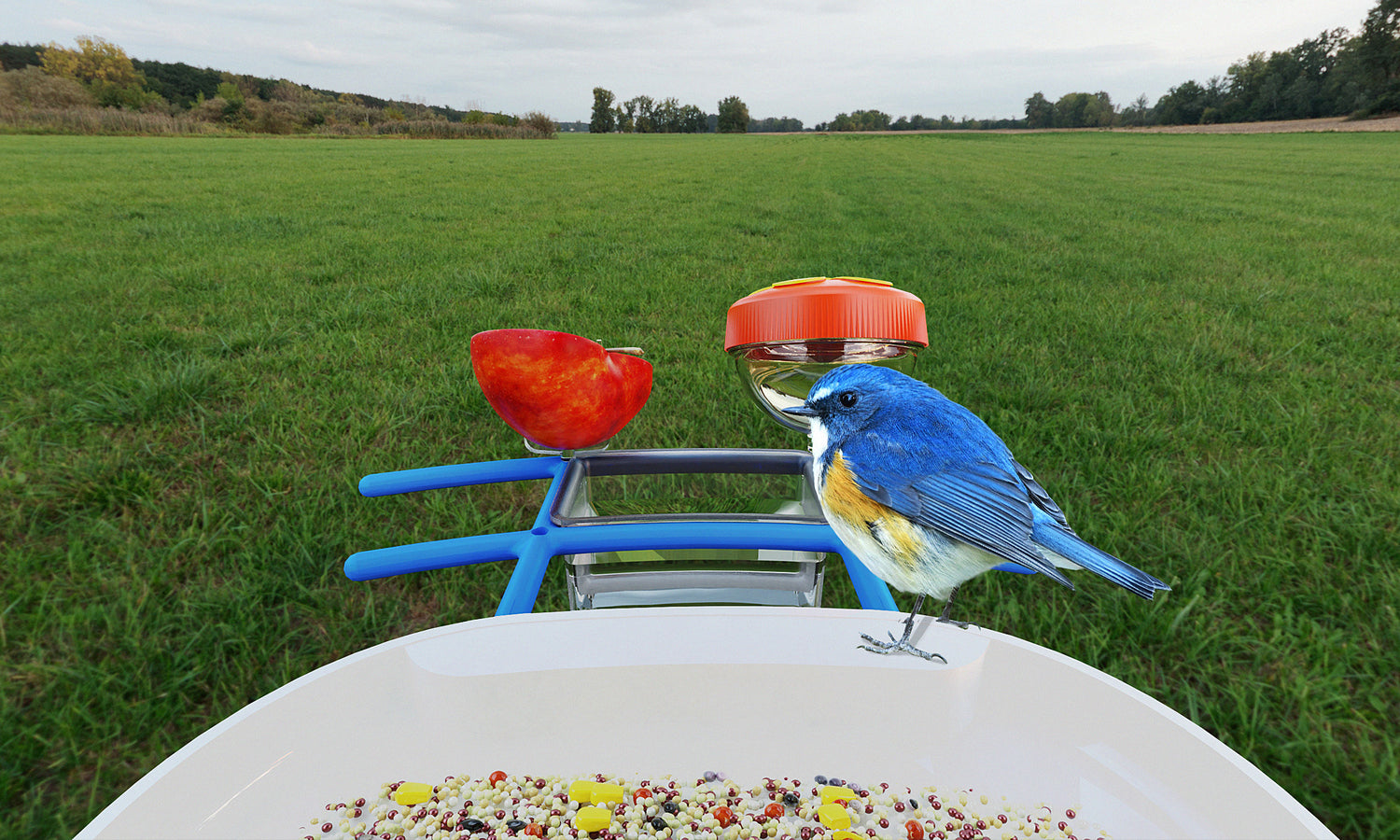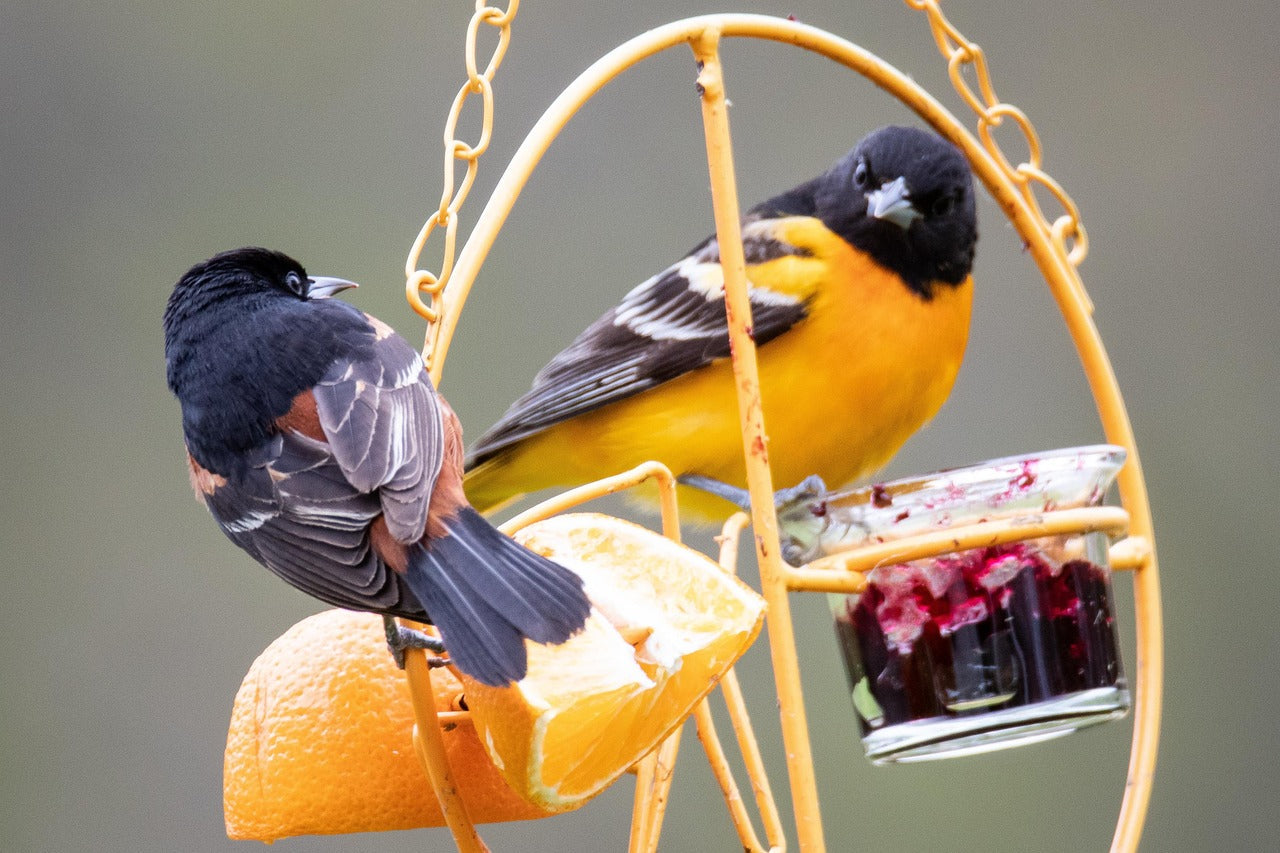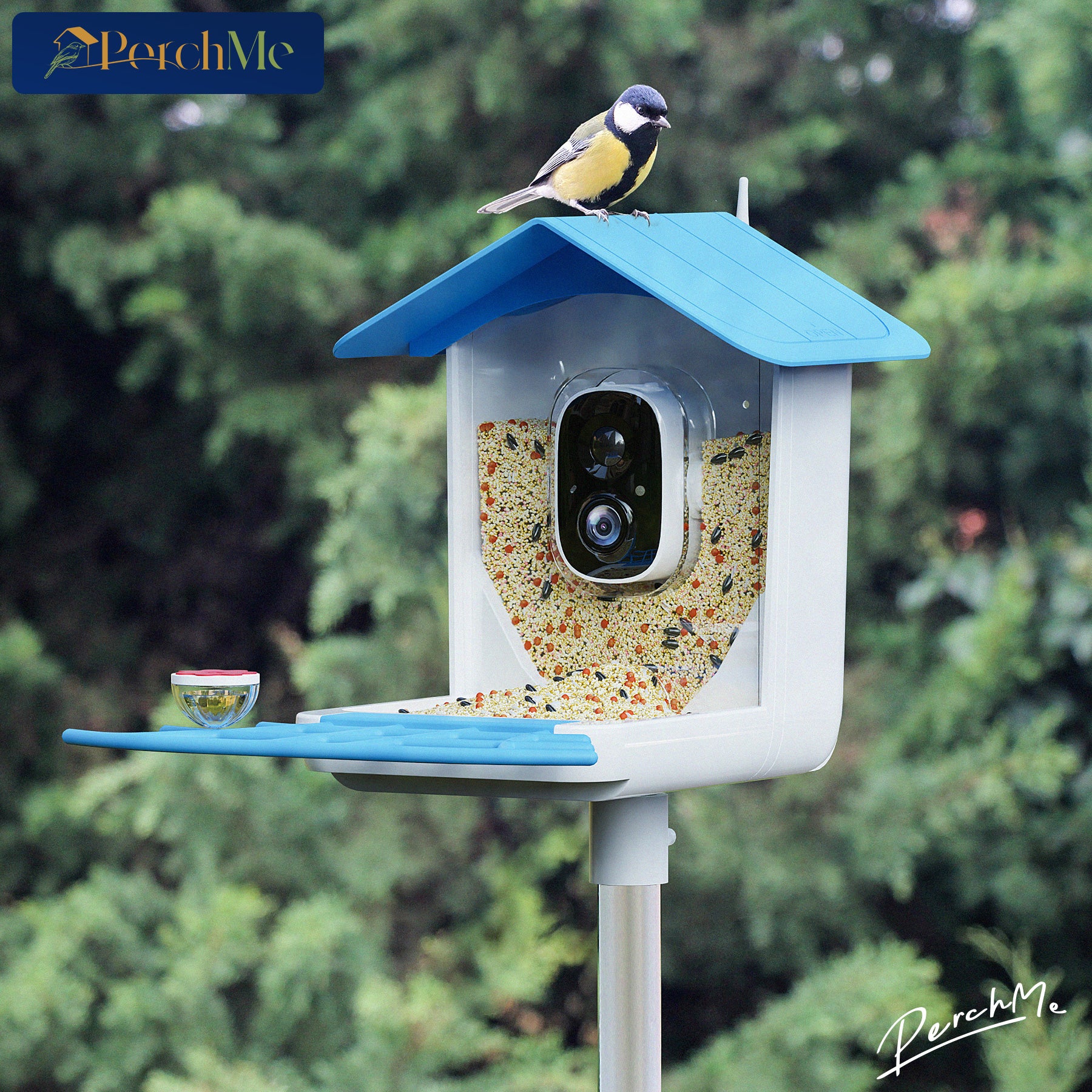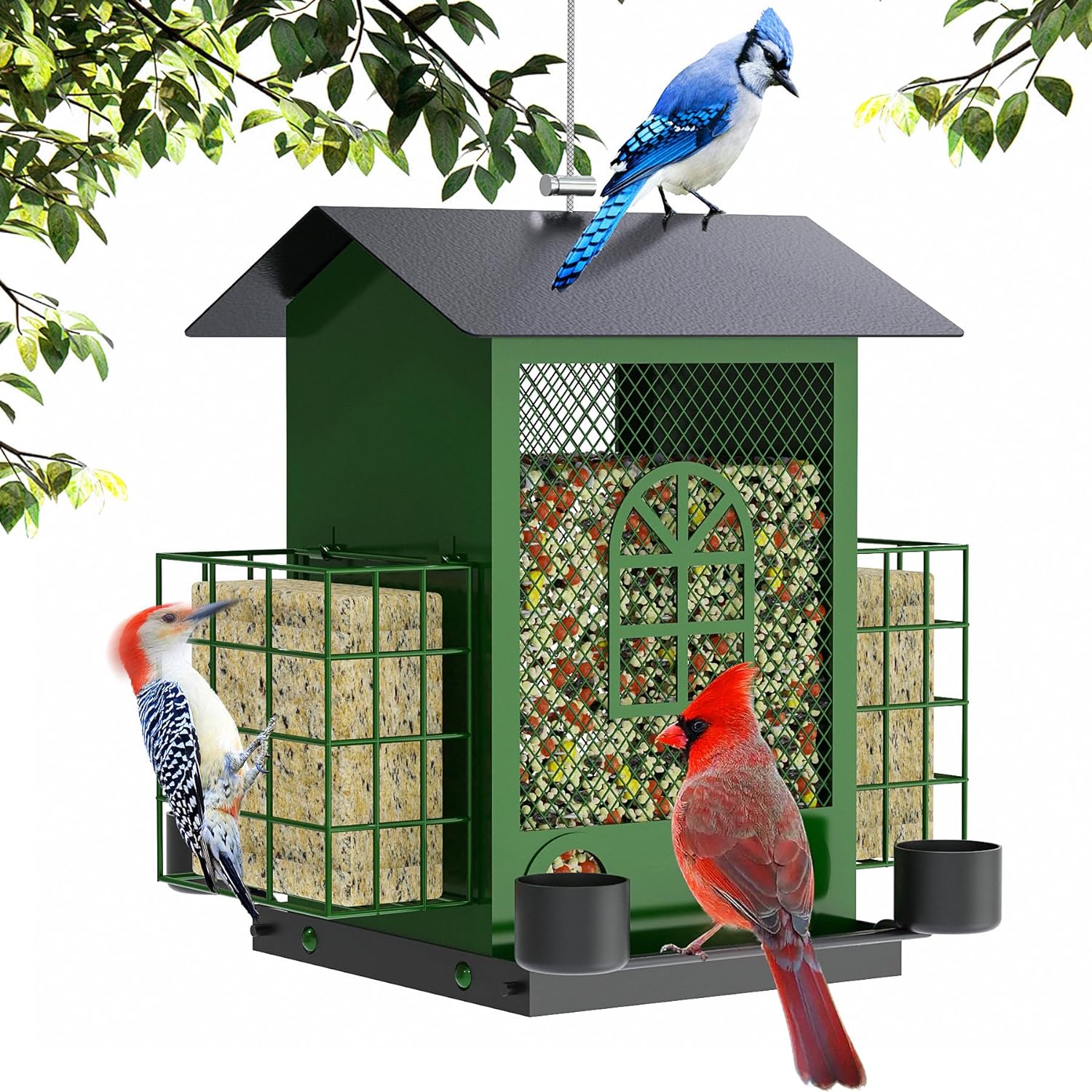Introduction: The Feeder Paradox
Every year, 57 million Americans fill bird feeders, hoping to support their feathered neighbors. But as we sprinkle seeds into our backyard feeders, a quiet question lingers: Are we helping birds thrive—or accidentally disrupting the ecosystems they depend on?
At PerchMe, we design smart bird feeders to enhance birdwatching responsibly. But before you hang that feeder, let’s unpack the science, risks, and rewards of feeding wild birds.

The Good: When Feeding Birds Works
1. Lifelines in Tough Times
Supplemental feeding can boost survival during extreme weather (like snowstorms or droughts) and migration. Studies show feeders help species like Northern Cardinals and Black-capped Chickadees conserve energy during winter.
2. Citizen Science in Action
Backyard feeders have contributed to critical research. Cornell’s Project FeederWatch, for example, uses data from everyday birders to track population trends and disease outbreaks.
3. Human-Nature Connection
Feeding birds fosters empathy for wildlife. A 2022 National Audubon Society survey found that 68% of bird-feeding households later donated to conservation efforts.

The Risks: Unintended Consequences of Feeding
1. Disease Hotspots
Crowded feeders can spread salmonella, avian pox, and conjunctivitis. In 2021, a finch eye disease outbreak in the Midwest was traced to contaminated feeders.
2. Nutritional Imbalance
Cheap seed mixes (heavy in filler like milo) attract invasive species (e.g., House Sparrows) while lacking nutrients native birds need. Overfeeding “junk food” can harm fledglings.
3. Ecosystem Disruption
Feeders may alter migration patterns, encourage predator activity (like hawks or cats), or give aggressive species (e.g., European Starlings) an unfair edge over natives.

How to Feed Birds—Without Harming Them
1. Clean Like It’s Surgery
Scrub feeders with 1:9 bleach solution weekly. Move feeders periodically to prevent waste buildup.
2. Serve a Balanced Menu
- Sunflower hearts for chickadees
- Suet with insects for woodpeckers
- Native plants (like coneflowers) for natural foraging
Avoid bread, processed snacks, and dyed seeds.
3. Less Is More
Feed sparingly during mild weather. Let birds rely on natural food sources to maintain foraging skills.
4. Be a Observer, Not a Curator
Monitor for sick birds (lethargy, fluffed feathers). If you spot one, take feeders down for 2 weeks.

Where PerchMe Fits In
Our smart feeders aren’t magic solutions—they’re tools for mindful feeding:
- Environmentally friendly and durable: Withstands harsh weather conditions and is IP65 rated.
- Easy to clean: The perch is removable for easy regular cleaning
- Squirrel Deterrents: Protect seeds without harmful chemicals.
But remember: No feeder replaces habitat conservation. Support local rewilding projects and keep cats indoors.
Your Turn: Let’s Talk
- Have you noticed changes in bird behavior around your feeder?
- What’s your biggest challenge in balancing bird feeding with ecosystem health?
Share your stories in the comments—we’ll feature the best ones in next month’s newsletter!
P.S:Ready to feed smarter? Explore our range of PerchMe smart feeders.

About PerchMe
At PerchMe, we crafted this place for the wild birds that soar in the sky. Our story is not just about bird feeders, but about creating a sanctuary where people and nature live in harmony.















Leave a comment
All comments are moderated before being published.
This site is protected by hCaptcha and the hCaptcha Privacy Policy and Terms of Service apply.